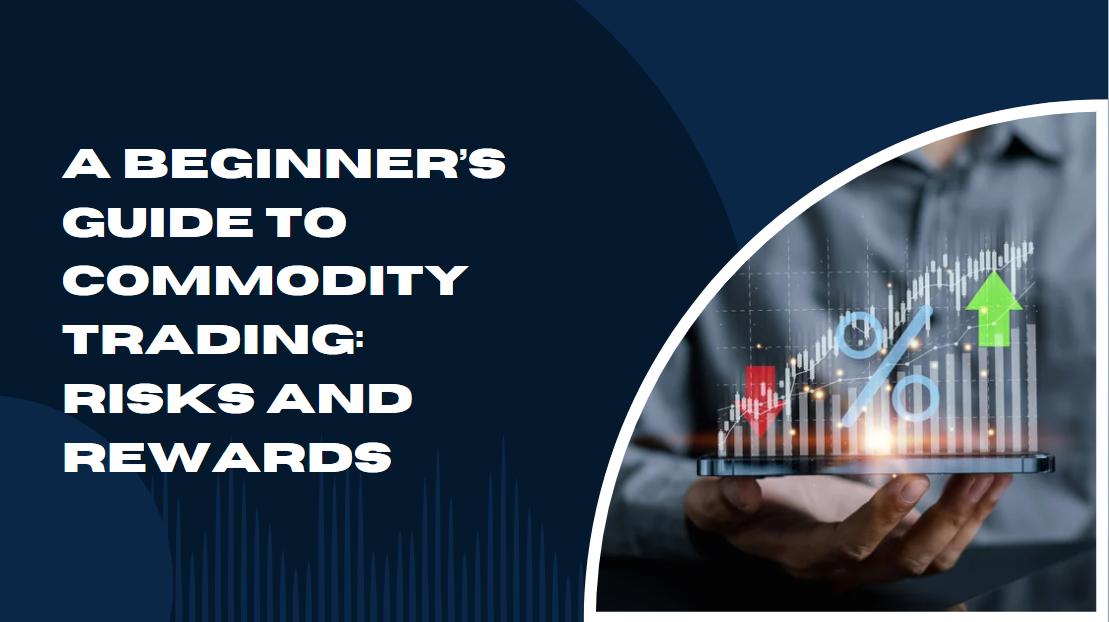Commodity trading is an appealing but intricate investment choice that offers both opportunities and challenges. Understanding the basics of how it works, the potential benefits, and the risks involved is essential for anyone looking to get started. In this guide, we will explore the fundamentals of commodity trading, break down the associated risks, highlight the rewards, and share some essential tips for beginners.
1. What Is Commodity Trading?
Commodity trading involves the buying and selling of raw materials or primary agricultural products. These can be traded on commodity exchanges through various financial instruments such as futures contracts, options, and ETFs. The two main categories of commodities are:
1.1. Hard Commodities
- Definition: These are natural resources that are mined or extracted.
- Examples: Gold, silver, oil, and natural gas.
1.2. Soft Commodities
- Definition: These include agricultural products and livestock.
- Examples: Wheat, coffee, cocoa, sugar, and cattle.
Commodities are typically traded on global exchanges like the Chicago Mercantile Exchange (CME) and the Intercontinental Exchange (ICE). Trading often involves using futures contracts, which set the price for a commodity at a future date and allow traders to speculate on market movements or manage price risks.
2. Why Trade Commodities?
Commodity trading can be appealing for several reasons. Let’s break down why traders consider investing in this asset class:
2.1. Diversification of Portfolio
- What It Means: Adding commodities to your investment portfolio can help diversify it, reducing your overall risk. This is because commodities often have price movements that are not directly correlated with stocks and bonds.
- Example: If the stock market is facing a downturn, commodities like gold may rise as investors move to safer assets.
2.2. Protection Against Inflation
- What It Means: Commodities can act as a hedge against inflation because their prices typically rise when inflation increases. Precious metals such as gold and silver are well-known for this characteristic.
- Example: During periods of high inflation, the value of cash may decrease, but the price of gold often goes up, maintaining the investment’s value.
2.3. Profit Opportunities
- What It Means: The volatile nature of commodity prices can lead to high-profit opportunities for traders who understand market trends and timing.
- Example: Price swings due to natural disasters or geopolitical events can create profitable situations for informed traders.
3. Risks of Commodity Trading
Although there are benefits, it’s crucial to understand the risks involved in commodity trading:
3.1. Market Volatility
- Explanation: Commodity prices can be extremely volatile due to factors like weather changes, global supply and demand shifts, and political events.
- Why It’s Risky: While volatility can create profit opportunities, it can also lead to significant financial losses if the market moves against your position.
- Example: In 2020, oil prices crashed dramatically due to the combined effects of reduced demand during the COVID-19 pandemic and oversupply issues.
3.2. Leverage Risks
- Explanation: Futures contracts allow traders to control a significant amount of a commodity with a relatively small initial investment—this is known as leverage.
- Why It’s Risky: While leverage can lead to amplified gains, it can also result in significant losses, sometimes exceeding the initial investment.
- Example: A trader using 10x leverage could experience a loss of 10% of their investment from just a 1% price movement against their position.
3.3. Speculative Nature
- Explanation: A lot of commodity trading is driven by market speculation, where traders try to predict future prices.
- Why It’s Risky: Speculative trading can cause prices to become disconnected from the actual value of the commodities, creating unpredictable market conditions.
- Example: The price of certain agricultural products can spike due to speculative interest, making it hard for traders to find consistent profit.
3.4. Global Economic and Political Factors
- Explanation: Commodities are heavily influenced by international economic conditions and political events.
- Why It’s Risky: Sudden changes in policies, trade wars, or geopolitical instability can lead to rapid price movements that may impact traders’ positions.
- Example: A major geopolitical event in the Middle East, which holds substantial oil reserves, can cause oil prices to spike or drop dramatically.
4. The Rewards of Commodity Trading
While trading commodities comes with risks, there are significant rewards for those who can navigate this market effectively:
4.1. High Return Potential
- What It Means: The price volatility in commodity markets can lead to substantial gains. If you can predict market trends correctly, the profit potential is high.
- Example: Gold prices often surge during periods of economic uncertainty, providing significant profits for traders who are well-positioned.
4.2. Variety of Trading Options
- What It Means: Commodities can be traded in multiple ways, such as through futures contracts, options, ETFs, and mutual funds. This diversity allows traders to choose their preferred trading style based on their risk tolerance and financial goals.
- Example: If you want to limit risk, you could opt for trading commodity ETFs instead of high-leverage futures contracts.
4.3. Diversification Benefits
- What It Means: Commodities can provide a hedge against market volatility and economic uncertainty, adding an extra layer of protection to your investment portfolio.
- Example: During stock market downturns, precious metals like gold often perform well, helping offset the losses in equity investments.
4.4. Liquidity
- What It Means: Most popular commodities like gold, silver, and oil are highly liquid, making it easy for traders to enter and exit positions without affecting market prices.
- Example: Gold’s high liquidity allows traders to buy or sell without significant price movements, making it an attractive option for both new and experienced traders.
5. Essential Tips for Beginners
For those just starting out in the world of commodity trading, here are some practical tips to get you going:
5.1. Invest Time in Education
- Make sure to learn about different types of commodities, how they are traded, and strategies for analyzing the market. Knowledge is power, especially in a market as unpredictable as commodities.
5.2. Understand the Role of Leverage
- Leverage can magnify your profits, but it can also magnify your losses. Start with lower leverage and gain experience before moving to higher-risk positions.
5.3. Practice Risk Management
- Use tools like stop-loss orders to minimize potential losses and protect your trading capital.
5.4. Stay Updated
- Keep up with global economic news and updates that could influence commodity prices. Understanding factors such as supply chain disruptions, trade policies, and weather conditions can provide valuable insights.
5.5. Start Small and Build Confidence
- Begin with smaller investments and use demo accounts to practice trading. This will help you understand the mechanics of trading and build confidence before committing larger sums.



